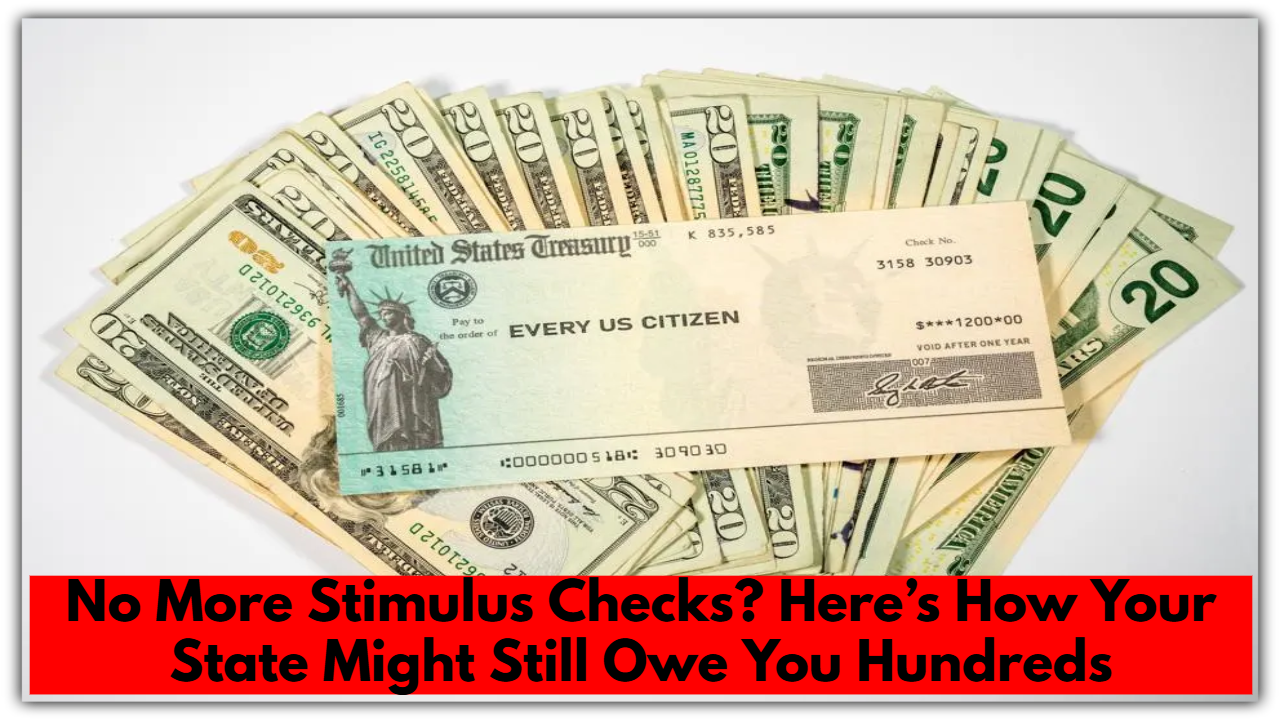No More Stimulus Checks? Here’s How Your State Might Still Owe You Hundreds
Let’s face it—federal stimulus checks are over. There’s no big check coming in the mail from Washington this year. But here’s something a lot of folks don’t realize: several states are quietly stepping up with their own financial help.
So even though the national programs have ended, your state might have some money set aside just for you. Here’s what you need to know about who’s offering what—and how to get it.
States Are Still Sending Out Payments
New York
New York is offering a one-time payment this fall based on your income and 2024 tax return.
-
If you make up to $75,000 and file solo, you could get $200.
-
Married couples earning up to $150,000 might get $400.
-
And if you’re a higher earner (up to $300,000 filing jointly), you might still see $300.
These payments are expected to go out automatically starting in October.
California
California is helping in a few different ways:
-
If you’re a utility customer with PG&E, SDG&E, or SCE, you’ll likely see a credit on your bill—usually between $39 and $59.
-
There’s also a pilot program offering monthly payments of up to $725 to low-income families. It runs through November.
Most of this happens automatically, but you can check your eligibility just to be sure.
Colorado
Colorado is using its budget surplus to send tax refunds:
-
$800 for individual filers
-
$1,600 for couples filing jointly
You’ll qualify if you filed a 2023 tax return and lived in Colorado the full year.
Georgia
Georgia has approved a surplus refund, and the checks are expected to go out this June.
-
$250 for single filers
-
$375 for heads of household
-
$500 for married couples filing jointly
Just make sure you’ve filed your 2023 state taxes.

Help for Seniors and Renters
Some states are also focusing on more specific groups like seniors or people with disabilities.
-
In Pennsylvania, the Property Tax/Rent Rebate Program now offers up to $1,000 to eligible seniors and disabled residents.
-
Arizona has a program that gives automatic payments of $250 per child and $100 per adult dependent, based on earlier tax returns.
Why Are States Doing This?
States ended up with budget surpluses after the pandemic, thanks in part to higher-than-expected tax revenues. Now, instead of holding onto that money, many are giving some of it back to residents—either through tax refunds, rent rebates, or energy bill credits.
So while the checks aren’t coming from the federal government, the goal is still the same: help people make ends meet.
What Should You Do?
-
Double-check your 2023 and 2024 tax filings. Most programs are based on those.
-
Visit your state’s official tax or revenue website to see if you qualify.
-
Keep an eye on your mailbox—some payments are automatic, but others might require you to apply.
Even though the federal government isn’t sending out stimulus checks anymore, that doesn’t mean all the money has dried up. Your state might still have a payment with your name on it—and some of these programs are already rolling out.
So don’t wait for a headline. Look into what your state is doing. A few hundred dollars (or more) could be just a click or call away.


Comments are closed, but trackbacks and pingbacks are open.